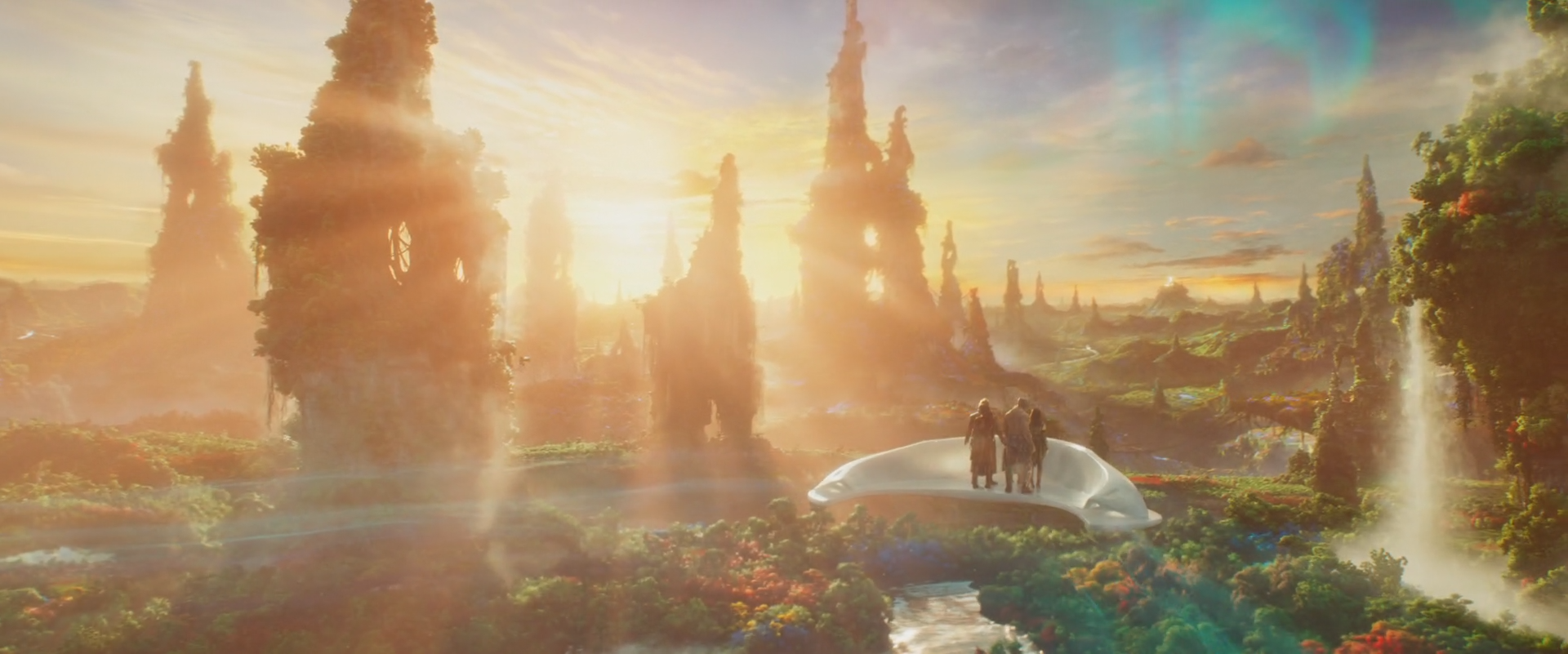Guardians of the Galaxy 2
FX, Tools

Working on an effects-driven Marvel blockbuster is any FX nerd’s dream, but for me especially, the kind of magical and alien effects involved in the Guardians of the Galaxy franchise made this job much more exciting.
Proceduralism > simulation
Over the course of nine months or so, I was tasked with creating a whole slew of tools and effects, mostly related to Ego’s planet. I tried to keep as much of it as procedural as possible, playing to Houdini’s strengths and avoiding costly simulation. The solar flare-like structures emanating from Ego’s planet in the opening shot of the sequence and the aurora-like wake following the white airship the crew travels on in particular were procedural geometry rendered as volumes, requiring little or no up-front simulation costs.

Procedural foliage and layout tools
The background flora was the focus of much of my tool development. The layout team needed to be able to quickly seed believable alien plant life on the huge spires comprising Ego’s planet. I generated a number of plant variations using a combination of L-systems and a space colonization algorithm implementation, then built a suite of tools to allow the layout team to quickly paint the vegetation onto the planet surface, taking into account the availability of sunlight, the slope of the growth medium, and a few other procedural tricks to improve the natural-looking distribution.

Landing Simulation
On the heavier simulation end, there were two shots in particular that were my focus: the landing of Ego’s ship, and the magical bubbles exploding around the crew on Ego’s planet. The ship landing was a huge swath of wire simulations for the background trees having their branches snapped off, and some very intense rigid body simulations for the stumps being crushed and pushed forward by the ship’s mass. Dust and leaves blowing in the wind from the ship’s exhaust and impact on the ground were added as a finishing touch to sell the shot.

Bubbles Simulation
The bubbles were the result of hundreds of iterations of simulations combined with hand-placed elements to complete the final look of hundreds of bubbles recursively exploding across the screen in myriad colors. The initial explosion was a meshed particle simulation, controlled by some fake particle-driven surface tension forces and an animated procedural “erosion” factor that ripped the bubble apart, then gradually coalesced the exploding droplets into more growing bubbles. The second shot seeded that same meshed simulation across hundreds of bubbles, releasing more instanced copies of the same simulation over time as each “wave” of bubbles exploded over and over again. This was combined with some custom camera-driven forces and old-fashioned keyframes to keep the actors’ faces visible throughout the sequence. Hundreds of iterations is not an exaggeration!
Method’s FX team is one of the best I’ve ever worked with, and I’m very grateful for the opportunity to have solved these problems alongside them.






